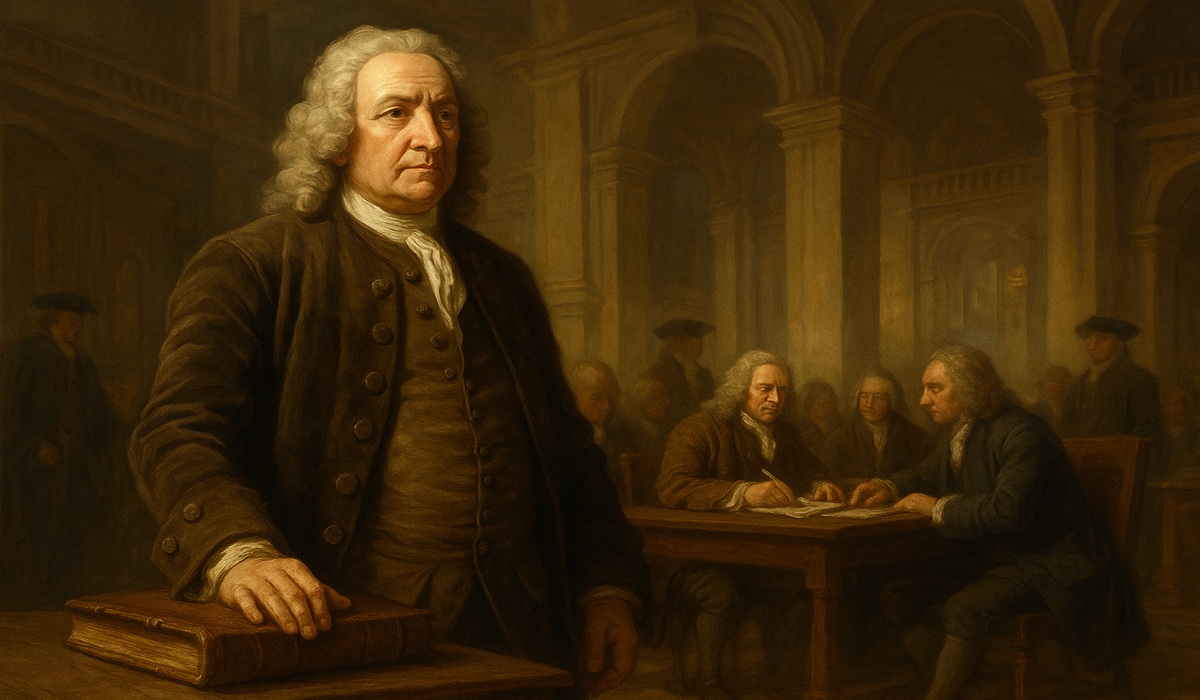William Paterson and the Birth of Perpetual Debt: How One Idea Reshaped Global Finance Forever
- TDS News
- Business
- Trending News
- November 15, 2025

By: Donovan Martin Sr, Editor in Chief
When William Paterson proposed the idea that would eventually create the Bank of England in 1694, he was not simply solving a temporary funding crisis. He was building the foundation of a financial architecture that would define the next three centuries, reshape global power structures, and create a system of national debt that continues to govern the modern world. His design was elegant, controversial, and astonishingly durable. At the time, England was desperate, financially exhausted, and unable to fund its war against France. What Paterson offered was not just money. He offered a new kind of economic engine—one based on a perpetual debt loop that governments could never realistically pay down, yet could forever service. And in doing so, he created the template for central banking, modern monetary policy, and the global system of credit that determines nearly every economic decision societies make today.
To understand the significance of Paterson’s vision, one must begin with the crisis England faced. In the late seventeenth century, the nation was drained by military conflict. Maintaining a navy, arming soldiers, and securing trade routes required vast sums. Traditional methods of raising funds—taxation, short-term loans from goldsmiths, or emergency levies—were insufficient. England was broke. Its creditworthiness was collapsing, and its war efforts were at risk of failure. The government did not merely need money; it needed a new mechanism to continuously generate money. That crisis created the space for Paterson, a Scottish merchant, to propose something unprecedented.
Paterson’s solution was deceptively simple: gather wealthy merchants and private investors, pool their capital, lend it to the government, and in exchange receive a steady interest payment funded through taxation. But the revolutionary twist was that the principal—the original loan—never had to be repaid. The state would pay interest forever. This idea of perpetual debt had never before been institutionalized at such a scale. England would secure the funds it needed. Investors would enjoy a guaranteed revenue stream backed by the power of the crown to tax its citizens indefinitely. And for the first time, a nation’s central financial institution would be privately controlled, with the government effectively renting money from those who owned the bank.
When the Bank of England was officially founded in 1694, Paterson’s concept became reality. Wealthy investors supplied the initial £1.2 million needed to stabilize the government’s finances—an enormous sum at the time. In return, the subscribers became shareholders of the new bank, which received exclusive privileges: it could issue banknotes backed not by gold alone but by government debt. This shift from tangible reserves to paper-backed-by-promises marked the birth of modern currency. Money became, at its core, belief—belief in the government’s ability to tax, belief in the bank’s ability to manage credit, and belief in an economy powered by debt rather than stored wealth.
Paterson famously noted that the bank “hath benefit of interest on all moneys which it creates out of nothing.” This line, whether apocryphal or paraphrased, captures the essence of the transformation he initiated. The Bank of England did not merely hold money. It manufactured money. It monetized national debt. It extracted wealth from the future. And it ensured that those who financed the state would become permanently intertwined with political power. The merchants and investors who backed the bank effectively became the quiet architects of national policy, because the government could not function without their capital.
This system of perpetual debt worked precisely because it aligned the interests of wealthy financiers with the state itself. By ensuring that principal was never repaid, Paterson created a structure where the lender’s profit was eternal. The government’s dependence became permanent. And the bank’s influence extended far beyond its initial mandate. What began as a war-time necessity evolved into a financial model that nations around the world would later adopt, adapting its principles to their own central banks and treasuries.
As Britain expanded its empire, the strength of its debt-driven monetary system enabled it to finance global trade, colonization, and industrialization. The Bank of England became not only a domestic power but a global force. Its methods shaped the creation of central banks across Europe, influenced the Federal Reserve in the United States, and became the blueprint for modern financial governance. The notion of money as debt, and of governments as perpetual borrowers, became the backbone of global economics.
The genius—and the quiet danger—of Paterson’s design was that it created a system that cannot be unwound. Once a nation commits to perpetual debt, it becomes structurally dependent on borrowing. Paying down the principal is theoretically possible, but practically impossible. Doing so would mean dismantling the very mechanism that funds public services, infrastructures, militaries, social programs, and economic growth. Governments have built their entire operations around the assumption that debt is not only acceptable but necessary. And because the money supply itself is tied to debt issuance, reducing debt would contract the money supply, triggering economic collapse. In this sense, Paterson’s debt architecture is a trap—but an intentional one. It forces stability through dependency.
Over centuries, this dependency has grown. Today’s societies operate on national debts measured in trillions, with interest payments becoming major components of annual budgets. Nations refinance endlessly, borrow to cover deficits, and rely on future taxpayers to service obligations that were created before they were born. The holders of government debt—large banks, financial institutions, and investment funds—become the quiet beneficiaries of this cycle. They receive guaranteed returns, protected by law, funded by society, and immune to political shifts. The system functions exactly as Paterson envisioned: governments depend on private capital, private capital profits from public dependency, and citizens sustain the loop through taxation.
Where this leaves modern society is both fascinating and unsettling. We live within an economic mechanism designed centuries ago for a small island nation at war—a mechanism that now governs the world’s largest economies. Our entire financial reality is rooted in an idea created to solve a temporary crisis, yet preserved because it proved profitable for those who controlled it. The central paradox is that the more a society grows, the more debt it accumulates. Prosperity and indebtedness become inseparable. The system is not broken; it is functioning exactly as intended. And because it benefits those who influence policy, there is little incentive to fundamentally reform it.
This brings us to the deeper introspective question: what does it mean for a society when its prosperity is tied to perpetual debt? On one hand, the system has produced remarkable advancements. It has financed innovation, infrastructure, healthcare, education, and technological progress. It has enabled governments to act quickly in times of crisis. It has kept economies stable through cycles of recession and growth. Without debt-based finance, the modern world would be unrecognizable.
But on the other hand, it has created structural inequality. The wealthiest entities—banks, investment houses, and financial elites—earn guaranteed returns from the labour of taxpayers. The government becomes a middleman between the citizenry and those who own its debt. And the ordinary person becomes a participant in a financial engine they do not understand and cannot exit. The sense that the system is rigged is not a misunderstanding. It is simply an incomplete recognition of how deeply the architecture of perpetual debt defines modern life.
If Paterson were to observe today’s world, he might be astonished not by the scale of debt but by the fidelity to his original concept. His model has not only survived; it has expanded beyond anything he could have imagined. Central banks now manage global liquidity, influence interest rates, and stabilize entire economies with the stroke of a pen. Nations borrow not millions but trillions. Currency floats, adjusts, or collapses based on confidence in a government’s ability to sustain its debt. And ordinary citizens navigate a world where mortgages, student loans, credit cards, and financial obligations mirror the same perpetual model that governments themselves follow.
Where this goes from here depends on how societies respond to the weight of this system. Some argue that perpetual debt has reached a breaking point. Others believe it remains the only viable foundation for global economic stability. What is clear is that the architecture William Paterson introduced in 1694 is still the silent engine of modern civilization. His design created the foundation for central banking, national credit, fiat currency, and global finance. It empowered governments while simultaneously binding them. It enriched elites while stabilizing nations. And it established a form of financial immortality—debt without end, interest without interruption, and a system that feeds on belief as much as on money.
Three centuries later, Paterson’s idea continues to define the world. The system created by the merchants and financiers of seventeenth-century England still determines how governments function, how economies grow, and how money itself is understood. Whether praised as the engine of modern progress or criticized as a mechanism of inequality, it remains one of the most influential inventions in human history. And it continues to operate exactly as designed.








